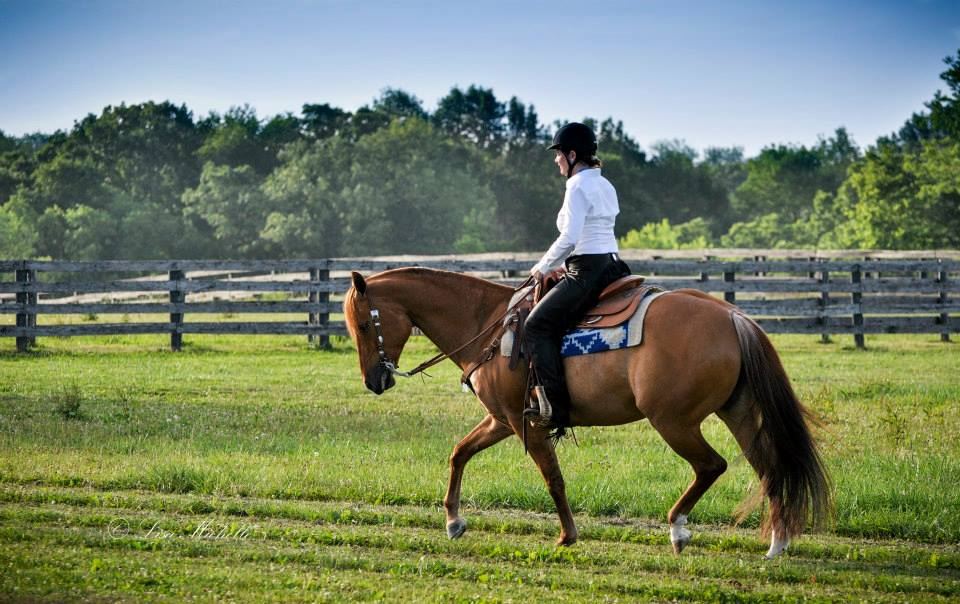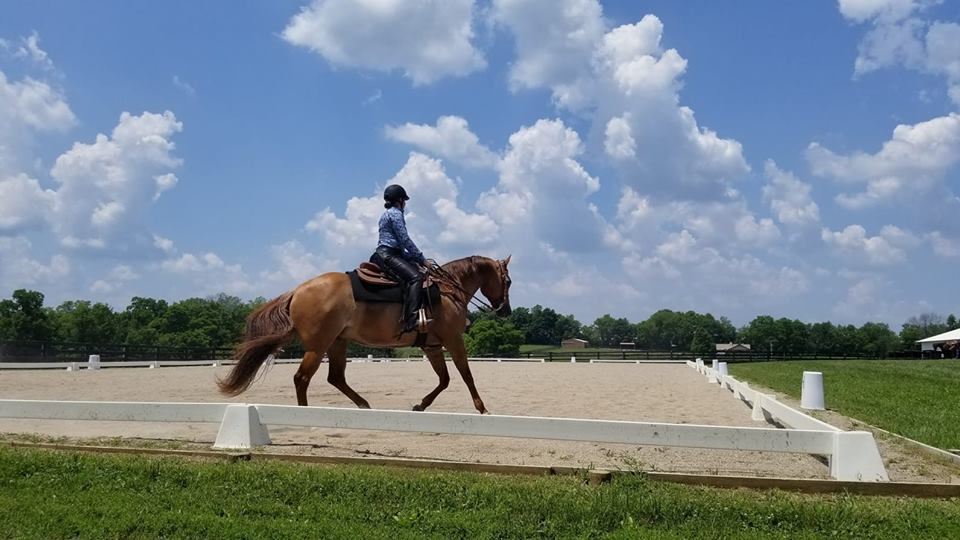Western Dressage is gaining traction in the horse world as many riders who traditionally compete in western show pens are venturing into the classical dressage sandbox.
USEF recognizes the Western Dressage Association of America (WDAA) as the sole affiliate representing the discipline of Western Dressage. A discipline that encourages all-breeds engagement, any horse that can walk, trot and canter can participate (WDAA also has rules for gaited horses, as well!).

Photo by Lisa Dean Photography
A core principle of the WDAA is the celebration and stewardship of the American West. Top-tier Western horse trainers have long used classical dressage techniques, but until the formation of WDAA, they have not had a place to showcase their techniques.
WDAA’s mission statement is to “build an equine community that combines the Western traditions of horse and rider with Classical Dressage.
- We honor the horse.
- We value the partnership between horse and rider.
- We celebrate the legacy of the American West.”
Nikki Wahl-Seto, MSEDA Newsletter Editor, is a staunch proponent of Western Dressage and has shown in the dressage ring in both a western and a classical dressage saddle. She is excited to see that Western Dressage is growing both as a national discipline and as a MSEDA-supported one. Here is her take on the differences between the two disciplines.
Equipment
There are many details that differentiate Western Dressage from Classical Dressage, the first of which is tack and its use. Riders using a curb bit can ride either one-handed or two-handed (riders using a snaffle must ride with 2 hands) said Nikki. Similar to classical dressage, there are legal bits and those that are not permitted in the show ring. For now, western curb bits are permitted in WDAA competition, though there is talk about only allowing snaffles in the lower levels, says Nikki.
“This rule has not taken effect yet as most western horses are trained in a curb bit and this would have limited the number of riders entering into western dressage,” she notes. As the purpose of WDAA is to encourage riders of all backgrounds to enjoy the competition of western dressage, it is unclear if and when this rule will take effect. Additionally, in the majority of western breed and disciplines events, a horse that goes in a snaffle is typically 5 years old and younger.
Similar to classical dressage, there are a plethora of bits that are both legal and illegal. Legal tack includes spade bits, most English bits, smooth or bosal cavessons, ported curbs, bitless bridles, and curb chains—the list goes on! “In addition to bits, stewards must also check spurs and whips,” said Nikki. “Yes, we can carry whips, though most true western riders see this as a very foreign concept!”
Attire
The attire for Western Dressage is quite simple; most schooling shows outline just pants, boots, a long-sleeved, collared shirt (short-sleeved shirts are permitted at the judge’s discretion), chaps or chinks and a helmet or western hat. “Helmets can be required, but their use is determined by the show and/or the show grounds, so it’s imperative that you check your entry form carefully,” says Nikki. If you have any questions, be sure to check with your steward or show management before the show. It also never hurts to email USEF regarding any rule questions!

“I have ridden against folks at the Horse Park in a cowboy hat, but most WD riders you will see in a helmet—safety first!” she says. “At big shows you will see the fancy outfits with sparkles and silver [those these don’t tend to come out for the smaller, local shows]." Bling is allowed on the rider, but not on the horse.
Read more about the WDAA attire and equipment here.
What Judges Look For
“In our area, we are riding in front of traditional dressage judges, and we’re lucky enough to have several judges who have put the effort and money into training themselves for Western Dressage,” says Nikki. Currently, WDAA lists two USEF Western Dressage judges in the MSEDA area: Susan Posner (“R”) and Karen Winn (“r”).
Traditional Dressage and Western Dressage are more alike than they are different, and are based on the same principles. Here are some places where they may differ:
- The ability to ride with one hand (with curb bits). Rein hold depends on the type of reins used. Roman reins can be used only with a curb bit and may only be ridden with one hand. A rider can ride with two hands with split reins, connected reins or mecate reins (without the popper),
- Gaits: Although maintaining the same principles (correct beats, steady tempo, suspension in gaits with impulsion, etc.) the trot is called a jog and the canter is called a lope. There is the distinction that these gaits must remain energetic and have the correct footfall (unlike some horses seen in Western Pleasure today). The tempo of these may be a little slower than those of a trot and canter but in gaits must remain pure. Excessive speed or slowness will be penalized.
- Quiet, gentle voice commands are permitted in all levels of WD.
- Posting is optional for the working jog through the basic level; posting is optional in all levels for the free jog and lengthening of the jog.
- Movements: Turn on the forehand is introduced in WD test but not in Traditional Dressage. Also pivoting is allowed in WD as it is a common and useful move for Western stock horses.
- WD allows gaited horses to compete. Gaited horses are penalized in traditional Dressage as their gaits to not meet the requirements.
Western Dressage riders can ride Intro, Basic, and First through Fourth level tests. Each test is based in dressage fundamentals and “showcase applications for the Working Western Horse,” the WDAA website states.
Read about the dressage rules and guidelines here.
The View from the Judge's Box
Janice Holmes, an eventing trainer and USEF “r” judge in eventing, as well as MSEDA licensed in eventing, stadium and dressage, notes that there are a few things she wants to be sure WSD riders are aware of.
- While the use of the voice may be used in Western Dressage that it should not be distracting. “Clucking like a chicken laying an egg or a frantic ‘WHOA!’ may be considered distracting, so please don’t over-do it,” she notes. (WD 125.3)
- Also of note, you’re allowed to pet your horse! “If you are riding one-handed. a gentle touch is allowed. Tiny scratching on the withers, if riding two-handed, is permitted,” she says (WD 125.4)
- In the “below the line” marks, there is a separate category for “willing cooperation and harmony,” says Janice (WD 117). “Harmony should be demonstrated by the horse showing attention by his confidence and acceptance of the bit while staying up in the poll and keeping his nose in front of the vertical” which can be difficult to do in a curb bit, she notes. (WD 117.d)
- A rider who begins a test one-handed must complete it one-handed; a rider who begins a test two-handed must complete the test two-handed. To switch in the middle of a test is actually a cause for elimination (WD 127.0)
- While polo wraps are permitted (WD 120.6), they should match the horse as much as possible. “Also, decorating the horse with ribbons, flowers or Christmas tinsel is not permitted unless you are doing a freestyle,” Janice notes.
- Attire can run the gamut. “Long-sleeved shirts are the norm, as are chaps, shotgun chaps, breeches, fringed breeches, split skirts, vests, jackets or sweaters,” she says. This leaves attire open for a lot of individual interpretation! And while bling is a thing, “please don’t blind me!” she says. “I still need to see your number!”
Fun Facts
Nikki noted the following interesting facts about Western Dressage:
- You can always use your voice during a WD test without penalty
- You may use equine legwear, but it must be white or the same color as your horse
- Western Dressage shows do not have to be sanctioned, many schooling shows host WD tests
- Readers are allowed for tests, but make sure they take a look ahead of time, movements come quicker than many traditional tests!
- Changes of direction came up faster and not always in the most traditional location; more movements are asked for at the lower-levels and tests may not always be symmetrical in what is asked for on each rein
- The entry-level tests require much more than circles and changes of direction can be more complex with elements/changes of direction coming up faster and in lower levels than we may see in many traditional tests (this is one of the biggest differences Nikki noticed).
Currently, Western Dressage is sanctioned only by USEF. The organization is focused on growing organically; the first WDAA/USEF sanctioned shows will be near Kentucky this year; the closest WD shows used to be were in Ohio and Tennessee, Nikki notes.
